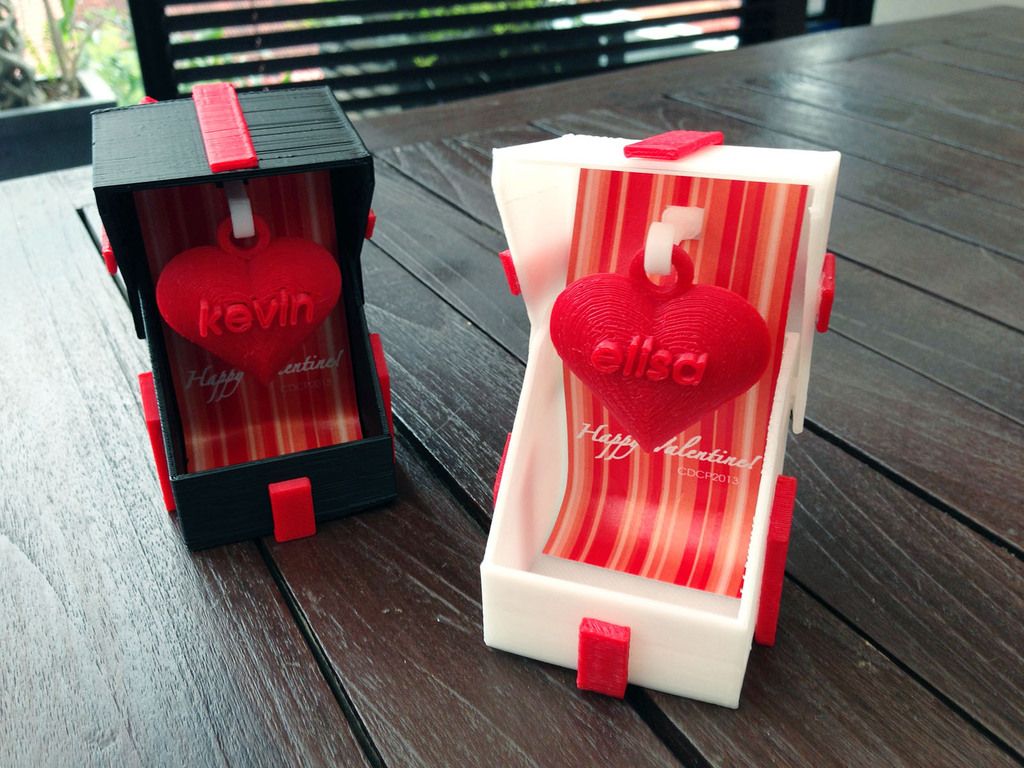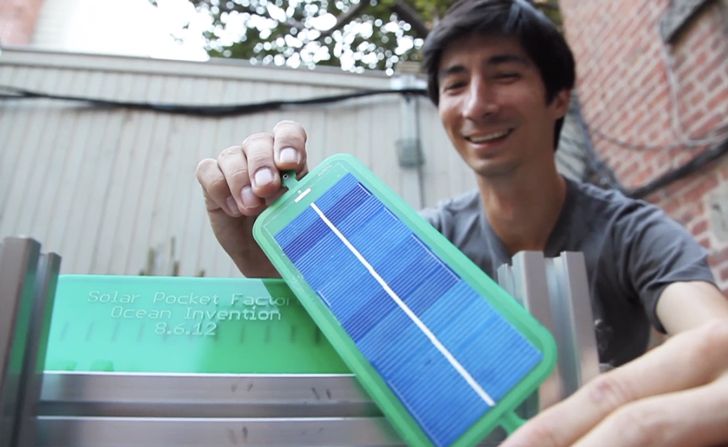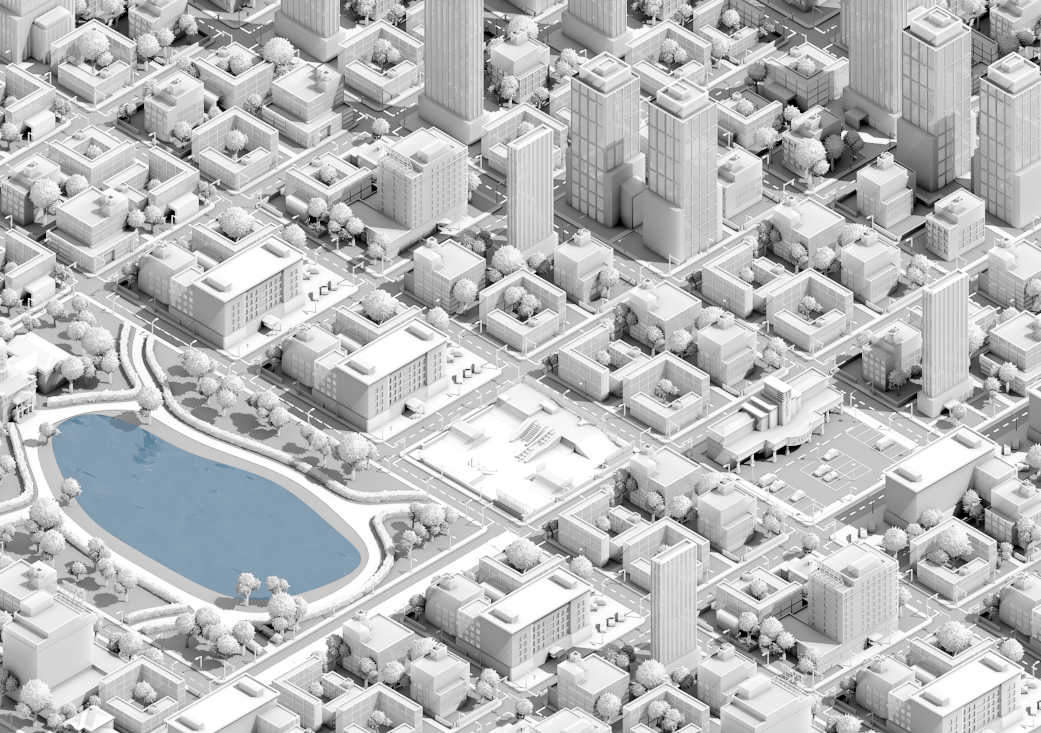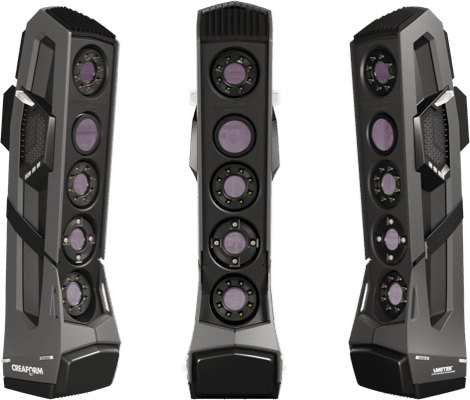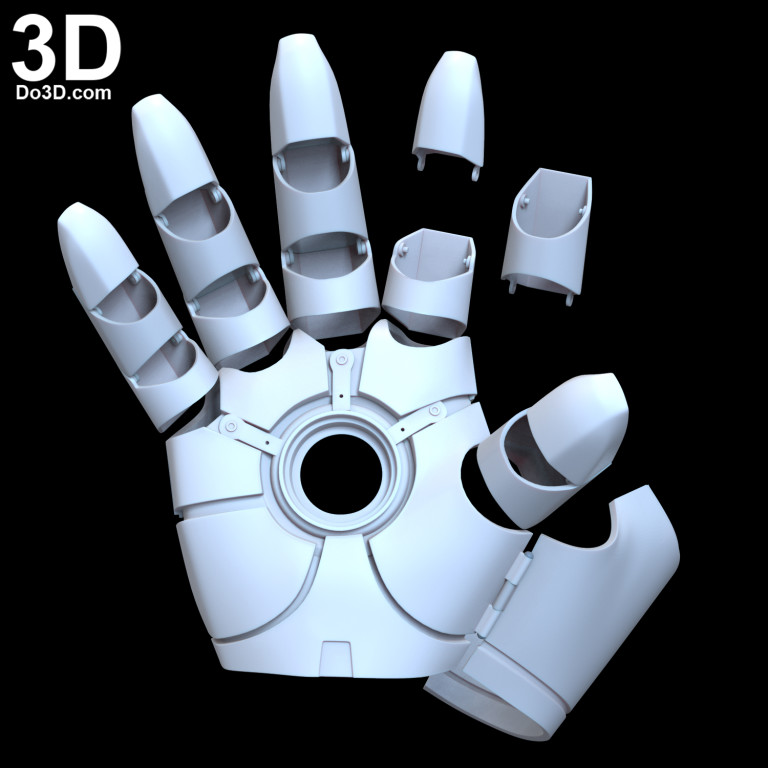3D printing for education
Guide to 3D Printing In Education
As professionals across almost every industry—healthcare, aerospace, engineering, manufacturing, and entertainment—continue to increase investment in 3D printing, the technology becomes an ever greater part of our daily lives. Many educational programs have recognized this and incorporated 3D printing into their curricula, but widespread integration of additive manufacturing into education programs will rely on greater awareness of the many benefits of 3D printing for education.
In the following guide, we’ll discuss the benefits of 3D printing in education, from improved student engagement and collaboration, to workforce development, multidisciplinary thinking patterns, and empowered creativity, as well as take a look at which technologies exist and how to choose between them.
From K-12 schools to post-graduate college programs, 3D printing is a way for educators to encourage more active participation in the learning process. Though research studies abound on different learning styles and the effectiveness of diverse teaching methods, so much of traditional education still relies on rote memorization of reading material. 3D printing offers a way for students to truly connect to the subject matter by physically manipulating ready-printed teaching aids or by designing tools themselves.
For K-12 students especially, this hands-on aspect of 3D printing in the classroom helps improve engagement and participation. To put this theory into practice, Formlabs partnered with Tech Boston Academy, a public high school in Dorchester, Massachusetts that focuses primarily on technology education. Over the course of a 13-week program, Formlabs employees gave lectures and guided the students through a project-based course, culminating in a ‘hackathon’ where students designed, modeled, and 3D printed a tool. The students were able to problem-solve and use CAD skills to develop a solution, then bring their ideas into reality with the Formlabs 3D printers. One student said that the aspect they enjoyed the most “was the ability to materialize physical objects inside my mind into a real thing that I could hold or touch. ”
”
FormEd program participants from Boston Tech Academy in the Formlabs Experiential Hub.
These types of in-person interactions are invaluable for developing young adults. In today’s educational environment, however, face-to-face instruction isn’t always possible. 3D printing ensures that each student has access to the hands-on tools they need and gives teachers the power to change those tools or print extra if necessary. “Our curriculum is very physical. We need machines, building tools, and laser cutters. So one of the casualties of going through the pandemic was that we couldn’t do much physical modeling or physical objects,” says Michael Silver, an architecture professor at the University of Kentucky. Relying on his previous experience with Formlabs 3D printers in the university’s labs, Silver brought a Form 2 home with him, had students send him their STL files, and printed their models out to be discussed at the final evaluation for the class. “We were able to continue to make physical objects during the period of quarantine. 3D printing gave us the ability to still physically implement a prototype during quarantine with everybody only meeting through Zoom and doing remote learning,” Silver said.
3D printing gave us the ability to still physically implement a prototype during quarantine with everybody only meeting through Zoom and doing remote learning,” Silver said.
Dental school is expensive, no matter what country you’re in. Part of that cost is due to the highly specialized tools that dental students need to learn. Dr. Gülşah Uslu, an instructor in the dental school at Canakkale Onsekiz Mart University in Turkey, began using 3D printers as a way to reduce costs and source a set of tools for each student, rather than ask students to share.
Typically, dental students go through a hands-on training program before they treat their first patient under supervision in the clinic. This training is either conducted on artificial anatomical models or on extracted teeth, both of which are expensive and difficult to procure. Dr. Uslu turned to 3D printing and produced more than 13,000 anatomically accurate artificial teeth models so each student could continue their hands-on learning uninterrupted, without relying on digital learning modules or sharing with classmates.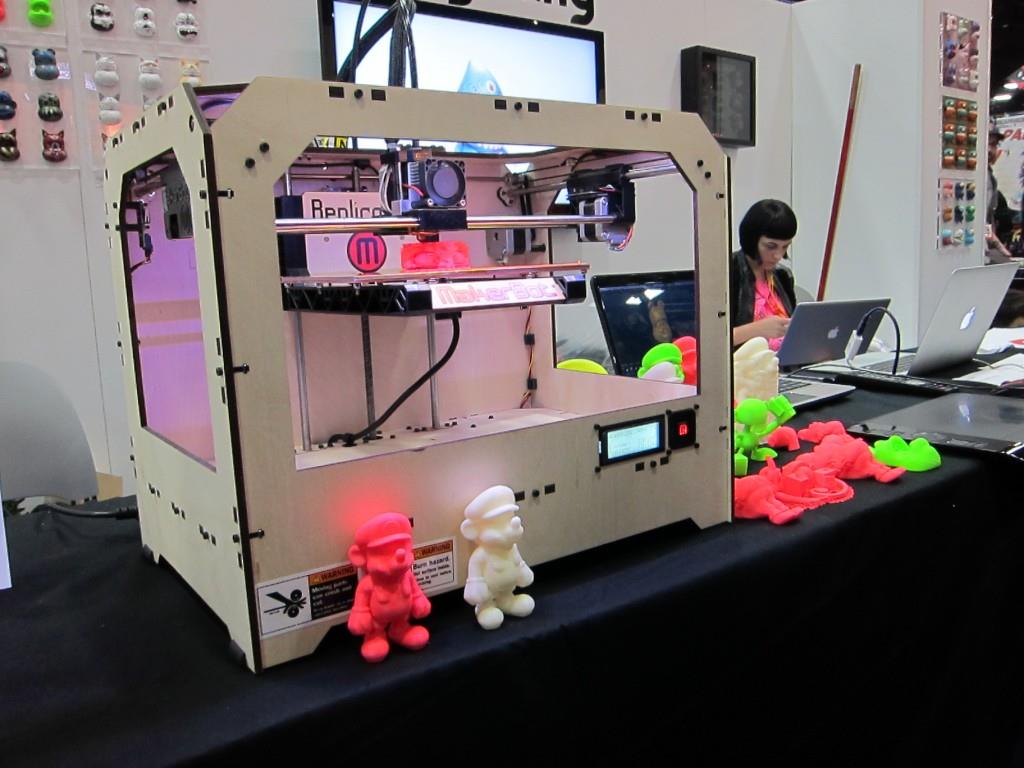 Dr. Uslu was able to continue her high standard of teaching and students were able to focus on personalized teaching tools, increasing their knowledge retention and engagement.
Dr. Uslu was able to continue her high standard of teaching and students were able to focus on personalized teaching tools, increasing their knowledge retention and engagement.
Formlabs reseller BTech Innovation has printed 13,000 anatomically accurate teaching aids.
Hands-on learning is a major tenet of Morrison Tech’s program, which partners with local industry leaders to deliver a practical, experience-based curriculum. Morrison Tech President Chris Scott sees 3D printing as a way to accelerate a typical manufacturing process, benefiting both the students learning how to 3D print in their classes today, and the companies they’ll one day be a part of. “[With 3D printing] we can see things much more clearly, and indicate where problems may occur, or what may not work or may not feel right to the consumer,” Scott said. “A secondary goal is how can we bring products to market more quickly and more aggressively, and I think that's where additive manufacturing really starts to shine.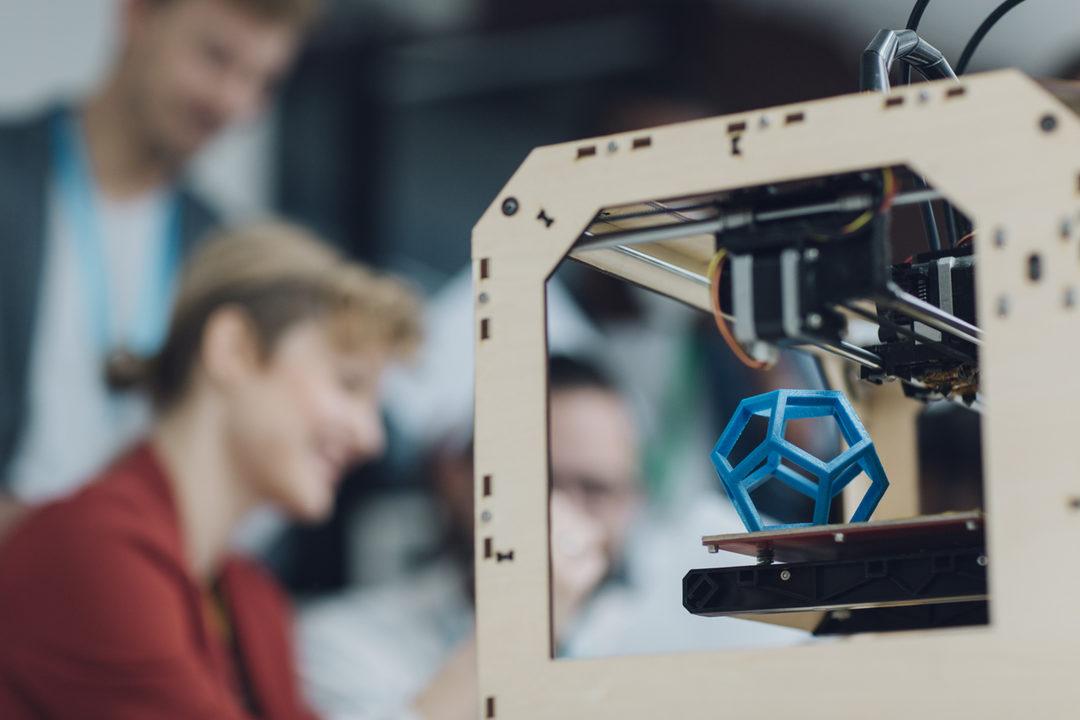 We can shorten that design cycle.”
We can shorten that design cycle.”
As Scott sees it, hands-on learning through 3D printing allows students to identify issues with the things they’re working on much more quickly than working only in a digital medium. Morrison Tech has integrated 3D printing into their curriculum for years, and it has not only benefited students by accelerating their learning, but by preparing them for jobs in the manufacturing industry through Morrison Tech’s many partnerships with local giants like Wahl Clippers, John Deere, and Caterpillar.
The Form 3L and Form 2 printers at Morrison Tech.
Programs like Morrison Tech partner with local industry leaders for mentorship and internship opportunities. These types of ‘town and gown’ relationships are invaluable for students looking to secure references, practical experience, and real-world problem-solving skills. 3D printing is becoming an ever more important part of that practical experience as manufacturers are scaling their 3D operations and looking for skilled employees.
3D printing provides students an accessible way to meaningfully contribute to the workplace during internships and entry-level positions. Traditional large manufacturing methods rely on expensive equipment and structured workflows—students were relegated to observing the structure or were given menial tasks. With 3D printing, students can take ownership and leverage their CAD skills to design a product idea or a repair part, something the current workforce might not have the time or the knowledge base to do. The students gain valuable experience and skills, while the business gains new perspectives and practical solutions at no cost.
The Fuse Series printers are ideal for both functional prototyping and industrial quality end-use production—perfect for students to contribute meaningfully in internships and with local businesses.
It’s not just large businesses that can benefit—students at Penn State’s Innovation Hub partner with local start-ups and small manufacturers to 3D print low-volume end-use parts.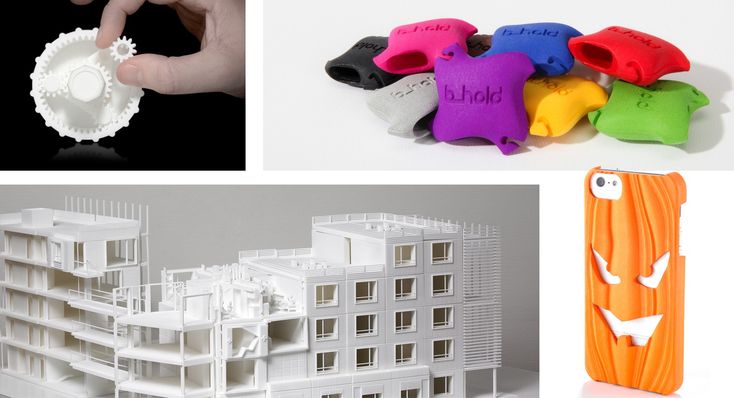 One project involved students printing small widgets for a local business owner that couldn’t afford a tool made for such a small volume. The students were able to take a real-world budgetary issue, and devise a solution through 3D printing—replacing an injection molding process with a direct 3D printed part. Innovation Hub Director Ryan Mandell told us, “A local business owner wanted to print 20 plastic parts, so we looked at the array of Formlabs materials, found a match, and determined it was possible to run 20 plastic widgets in one build on the Form 3L. They had been turned down by injection molding companies because 20 parts was too small-scale, so it was the perfect 3D printing use case." Students at the Hub were able to provide tangible consulting and manufacturing services for this local business owner and by doing so, helped the local community and bolstered their resume.
One project involved students printing small widgets for a local business owner that couldn’t afford a tool made for such a small volume. The students were able to take a real-world budgetary issue, and devise a solution through 3D printing—replacing an injection molding process with a direct 3D printed part. Innovation Hub Director Ryan Mandell told us, “A local business owner wanted to print 20 plastic parts, so we looked at the array of Formlabs materials, found a match, and determined it was possible to run 20 plastic widgets in one build on the Form 3L. They had been turned down by injection molding companies because 20 parts was too small-scale, so it was the perfect 3D printing use case." Students at the Hub were able to provide tangible consulting and manufacturing services for this local business owner and by doing so, helped the local community and bolstered their resume.
At Yavapai College, Matthew Mintzmyer, Director of Aerospace Science, 3D Printing and Manufacturing, prepares students for careers in every industry—his recent graduates went on to careers in dental medicine, props work for the Mandalorian television show, and architecture, among many others. “There are tons of applications. People that aren’t in the 3D printing business in schools, they’re behind the curve. It teaches you critical thinking, math, creativeness—everything. You don’t need $100,000 to get started, these printers are affordable,” says Mintzmyer.
“There are tons of applications. People that aren’t in the 3D printing business in schools, they’re behind the curve. It teaches you critical thinking, math, creativeness—everything. You don’t need $100,000 to get started, these printers are affordable,” says Mintzmyer.
Mintzmyer leverages his 3D printers to improve Yavapai students’ experience, but also grow industry opportunities. COBOD, a concrete 3D printing construction firm, sends every new technician to Yavapai to learn how to service, operate, and maintain large industrial concrete 3D printers. This business opportunity for Yavapai is entirely because of Mintzmyer’s early investment and adoption of 3D printing technology. He uses Formlabs SLA and SLS 3D printers to print prototypes, jigs, end-use parts, and repairs for various pieces of other 3D printers. Students at Yavapai get a first-hand view of what it takes for a lucrative career in a burgeoning industry, and get to participate in the training programs alongside the COBOD engineers.
Never before have different disciplines been so interconnected. With increasing digitalization, traditionally disparate elements of a product’s lifecycle, like ideation and manufacturing, have more crossover. 3D printing is a large part of this—it speeds up product lifecycle stages to such a degree that the entire evolution can be streamlined, with disciplines blending into each other and improving upon one another. This type of collaboration within a business is also evident in educational institutions’ makerspaces and fabrication labs.
Drexel University’s Westphal College of Media Arts and Design offers programs for students hoping to pursue anything from Animation to Fashion to Virtual Reality, and their centrally located Hybrid Making Lab offers opportunities for every type of project. The Making Lab director Erik Sundquist told us, “students will use it for everything from architectural models, fashion design, accessories, hardware for garments… we have a few students interested in making fully 3D printed articulated fabrics. ”
”
A product design senior thesis project (left) and a sculpture class’s 3D scanned and printed fish bones (right) at Drexel’s Hybrid Making Lab. (photos courtesy of Drexel Hybrid Making Lab).
Sundquist sets up the space so that students are trained, then run the space themselves, responsible for teaching other students, no matter if the project is a different discipline than their own. “It’s more democratic that way and better for interdisciplinary learning,” says Sundquist. He sees students in fashion majors asking for help from engineering students and product design majors for articulating pieces, and vice versa. The centrally located lab is perfect for students to collaborate, share ideas, and exchange expertise, and 3D printing is the impetus behind these types of impromptu brainstorming sessions. A fashion major might see the overall picture, like a chain mail dress, but need an engineering student’s help in designing the tolerances between each chain link, or choosing which technology to use for a support-less print structure.
3D printing can empower students to try new clubs or associations and take their skills from the classroom into a new application. Students at TU Berlin rely on 3D printing to develop high-powered performance race cars for the global Formula Student competition. These cars need to be durable, resistant to high temperatures and impact, and extremely lightweight. The TU Berlin team, often composed of as many as 90 students, relies on Formlabs SLA printers for carbon fiber molding processes and end-use parts.
A mold (left picture, left hand) used for molding a carbon fiber steering wheel enclosure (left picture, right hand) and a prototype of a complex topology optimized mount (right picture), both printed on a Form 3 SLA 3D printer.
Access to accurate, reliable, and easy-to-use 3D printers has allowed the TU Berlin team to expand their output—they annually produce three cars, from design to race, within the school year. This technology has enabled a team of young students to work on something they’re passionate about, and deliver not just one, but three performance products on an international stage each year. The skills they develop and the sense of ownership and empowerment they feel wouldn’t be possible if they had to outsource much of their work, or rely on supervisors to operate more expensive machines. The affordability and accessibility of the Formlabs 3D printers empower their creativity and productivity.
The skills they develop and the sense of ownership and empowerment they feel wouldn’t be possible if they had to outsource much of their work, or rely on supervisors to operate more expensive machines. The affordability and accessibility of the Formlabs 3D printers empower their creativity and productivity.
Educators have a monumental task before them, and determining which technology is the best for their curriculum can be an added stress. This section will review the various 3D printers for schools and help clarify which 3D printer is best for different courses and priorities.
Perhaps still the most ubiquitous type of 3D printer in education, FDM 3D printers build parts by melting and extruding thermoplastic filament, which a printer nozzle deposits layer by layer in the build area. Its advantages lie in its scalability and affordability, as well as the straightforward nature of the technology, which makes it an easy concept to grasp for school children just learning how to design in CAD.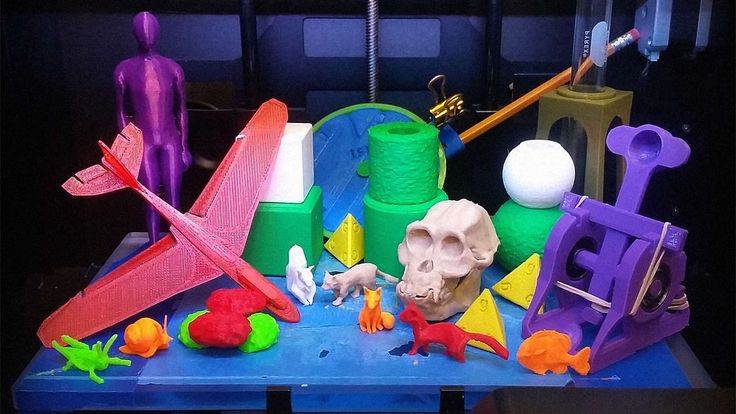
Though manufacturers do make expensive FDM printers that can cost upwards of $50,000, most units used by educators cost around $1,000-$4,000. FDM printers can deliver parts quickly and through an intuitive visual process—making them a great entry-point for younger students. Once the students begin to design functional parts and multi-part assemblies however, the lower quality surface finish and precision begins to pose a problem. The lower part quality and more narrow range of materials also means that the applications FDM printers can support are limited, especially in a research or higher educational environment. FDM 3D printers are one part of the 3D printing puzzle and a great starting point, but should be taught in concert with other, more advanced types of 3D printing.
Educators were initially slow to adopt traditional SLA 3D printers when prices put them out of reach of a typical school budget. Then, as desktop SLA 3D printers like the Form 2 and Form 3 made the technology accessible and proved their reliability and professional quality, they’ve become relied-upon tools in every educator’s toolkit.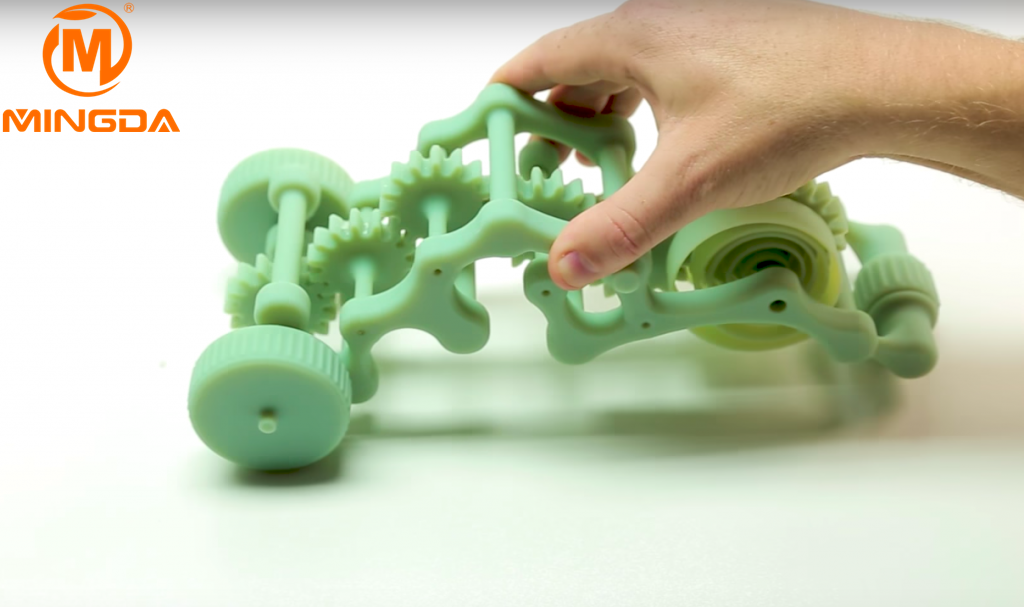
SLA printers are versatile and suitable for many applications due to their superior surface finish, range of material options, and pinpoint accuracy. The isotropic nature of SLA parts also sets them apart from other technologies, and makes SLA the front runner in watertight parts printing.
The Form 3L can fit many students’ projects into the large build volume at one time, making it a helpful addition for makerspaces during high-traffic times at the end of the semester.
For research labs, the variety of high-performance materials means that a printer can be added for a specific project, then used again and again as new projects crop up, simply by switching to whatever material is most appropriate—from high- temperature fluidics, to transparent and biocompatible cell scaffolding, to impact-resistant fixtures and casings. In open areas like fabrication labs or makerspaces, the variety of materials continues to shine along with the large build volume possible on the Form 3L. Multiple students’ projects can be fit into one build volume of the same material, then switched out for a new material and new group of students projects. The resin handling and cartridge system streamlines maintenance and operations.
Multiple students’ projects can be fit into one build volume of the same material, then switched out for a new material and new group of students projects. The resin handling and cartridge system streamlines maintenance and operations.
White Paper
Looking for a 3D printer to realize your 3D models in high resolution? Download our white paper to learn how SLA printing works and why it's the most popular 3D printing process for creating models with incredible details.
Download the White Paper
Sample part
See and feel Formlabs quality firsthand. We’ll ship a free sample part to your office.
Request a Free Sample Part
Traditionally the most expensive out of the three main types of plastic 3D printing technologies, SLS 3D printers, like the Formlabs Fuse Series, create functional prototypes and durable end-use parts with high-performance mechanical properties.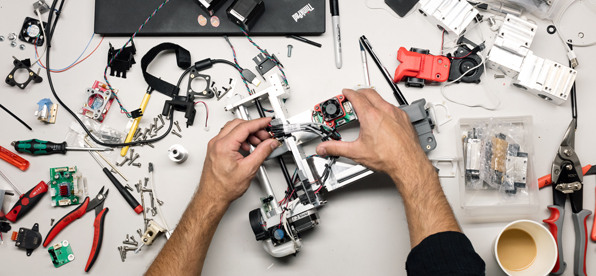 The technology uses a high-powered laser to selectively sinter small powder particles in the shape of a crosssection of the desired file, then repeats the process layer by layer, building the part while each layer is supported by the surrounding powder bed.
The technology uses a high-powered laser to selectively sinter small powder particles in the shape of a crosssection of the desired file, then repeats the process layer by layer, building the part while each layer is supported by the surrounding powder bed.
Before the Fuse Series, SLS 3D printers cost $200,000 at the minimum and often much more, putting it out of reach for most university operating budgets. Some engineering and manufacturing programs were able to secure grant funding for these units, but the large footprint, complex workflow, and expensive required infrastructure meant that very few students had the opportunity to use them.
With the introduction of the Fuse 1 in 2020, educators at every level were finally able to bring industrial quality SLS in-house, giving their students the opportunity to create end-use parts for real-world applications, and providing them with powder-bed 3D printing experience. Captain Baker at MakerSpace USNA has students use the Fuse 1 SLS 3D printer before moving on to metal 3D printing technology—in which mistakes are much costlier and more common.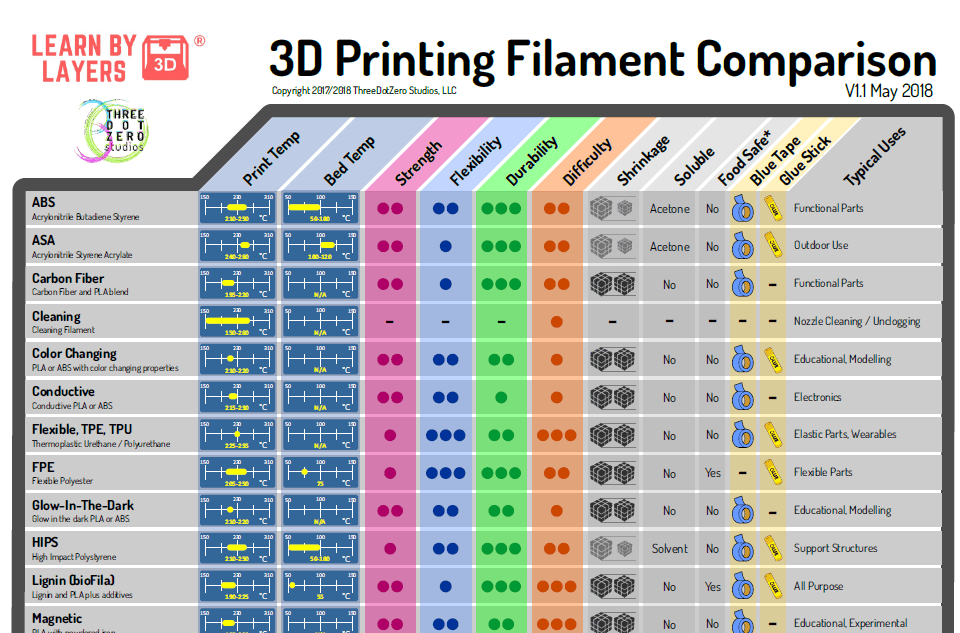 At the NOAA AOML lab, working in conjunction with the University of Miami’s Cooperative Institute for Marine and Atmospheric Studies (CIMAS), the Fuse 1 SLS printer is used to print rugged underwater enclosures for coral sampling equipment.
At the NOAA AOML lab, working in conjunction with the University of Miami’s Cooperative Institute for Marine and Atmospheric Studies (CIMAS), the Fuse 1 SLS printer is used to print rugged underwater enclosures for coral sampling equipment.
A member of the NOAA AOML lab installs a subsurface autonomous sampler to gather data on wild coral species (left). Inside the NOAA AOML lab, a coral tank monitoring device encased in a Fuse 1 printed SLS part (right).
White Paper
Looking for a 3D printer to create strong, functional parts? Download our white paper to learn how SLS printing works and why it's a popular 3D printing process for functional prototyping and end-use production.
Download the White Paper
Sample part
See and feel Formlabs quality firsthand. We’ll ship a free SLS sample part printed on the Fuse 1+ 30W to your office.
Request a Free Sample Part
The needs of educators vary widely—from the eighth grade ‘Intro to 3D Design’ teacher to the postgraduate researcher, there isn’t one job description or role. Similarly, there can’t be one 3D printer that solves every problem. Leveraging different 3D printing solutions for different applications and environments is the best way to make sure students are engaged, encouraged and empowered, and prepared for their careers. For example:
Similarly, there can’t be one 3D printer that solves every problem. Leveraging different 3D printing solutions for different applications and environments is the best way to make sure students are engaged, encouraged and empowered, and prepared for their careers. For example:
-
FDM printers, with their simplicity and low price-point, may be ideal for K-12 schools.
-
SLA printers are the most versatile—the range of material options, prices, and sizes coupled with the high accuracy and smooth surface finish make it easy to choose an SLA printer for your project.
-
SLS printers deliver industrial power printing with proven, functional end-use materials like nylon. Models like the Formlabs Fuse 1+ 30W do so at an accessible cost, making it possible for students to master powder-bed printing without relying on grant funding.
Each educational institution will have its own preferences and abilities for making 3D printers accessible to students.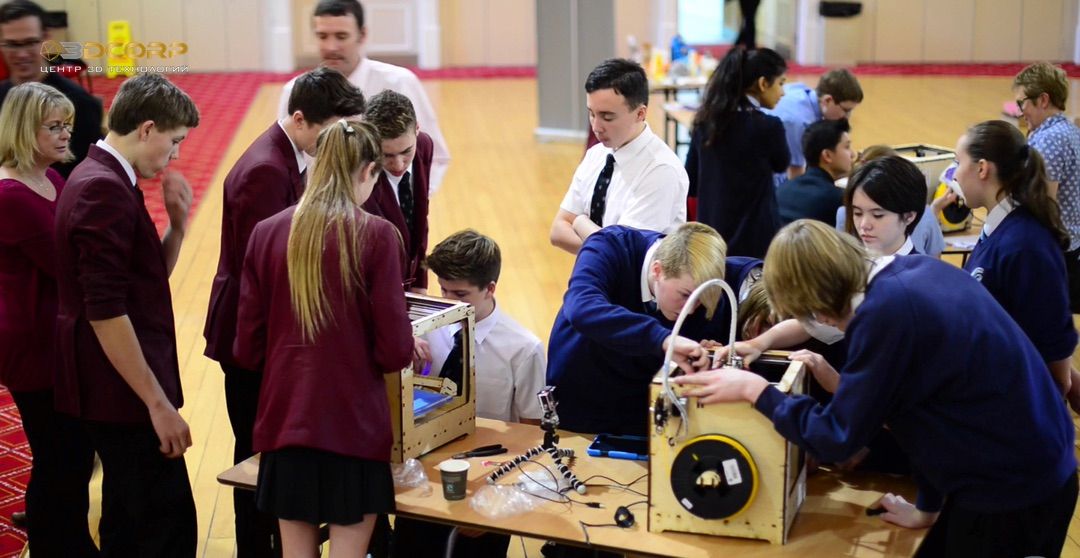 For most universities, the addition of 3D printing labs is managed by department heads, while at others, large grants might be given to create a multi-disciplinary space open to all.
For most universities, the addition of 3D printing labs is managed by department heads, while at others, large grants might be given to create a multi-disciplinary space open to all.
3D printers can improve the learning experience in any situation, whether used in small research labs for specific projects, or in large makerspaces, fabrication labs, innovation hubs, or entrepreneurial incubation centers.
Research labs vary widely in scope, size, and subject matter, but because they’re all dedicated to advancing scientific understanding, cutting-edge technology like 3D printing has been incorporated for years. At the University of Hawaii’s Nanotechnology Lab, an undergraduate student is in charge of operating and maintaining the Form 3 and Form 3L SLA printers that help undergrads, post-graduates, and doctoral candidates create research materials. The largest use-case for the printers in the lab is for sacrificial compaction molds for high-performance ceramic nanomaterials.
“We needed to have a solution where we could prototype and make molds very rapidly with structural integrity and smooth surface finish. We had the Form 3, and were very happy—it has the biggest legitimate catalog of materials to print from. As far as the Form 3L, we wanted the big form factor for big ceramic molds,” the student told us.
We had the Form 3, and were very happy—it has the biggest legitimate catalog of materials to print from. As far as the Form 3L, we wanted the big form factor for big ceramic molds,” the student told us.
At the University College of London School of Pharmacy, the printers are used for visualization tools of anatomical parts. A model of a gastrointestinal tract, for example, is used to help students understand how food (and medicine) are processed and passed through the body, which helps in their understanding of how to safely medicate patients. The accuracy of the Formlabs printers allow researchers to create lifelike models of extremely complex systems in the body. “I use the Formlabs 3D printer to print molds for medical devices for a ventilation therapy project,” said Zaid Muwaffak Hassan, a PhD student in the UCL Hilton Lab. “It’s very easy to use, very accurate, and has really high details.”
In the lifesciences, accuracy and precision can mean all the difference for these students. Their projects are real life-saving devices and practices. Having accurate tools that properly represent the body, or have the biocompatibility necessary for skin or mucosal contact, is integral to their success, and therefore the health of their patients.
Their projects are real life-saving devices and practices. Having accurate tools that properly represent the body, or have the biocompatibility necessary for skin or mucosal contact, is integral to their success, and therefore the health of their patients.
Makerspaces and fabrication labs are generally open to large, varied groups of students, and some also open their doors to the surrounding community, professors, or local K-12 programs. It’s because of this unpredictability in usage that planning ahead and budgeting are difficult for makerspace directors. Even when only open to university or college students, the busiest times might be limited to just the end of the semester when final projects are due. 3D printers for makerspaces have therefore traditionally been a quantity over quality consideration—directors need to make sure that when everyone comes rushing in, they can use a 3D printer with minimal oversight, scheduling, or training.
For many years, this led to large installations of FDM printers being the main (or sometimes only) technology available in makerspaces. In the past five years, however, 3D printers like the Form 3+, Form 3B+, Form 3L, and Fuse Series have gained popularity for a number of reasons.
In the past five years, however, 3D printers like the Form 3+, Form 3B+, Form 3L, and Fuse Series have gained popularity for a number of reasons.
The Formlabs suite of printers combines the industrial power and accuracy of expensive 3D printers with the ease of use and affordability of entry-level machines. Additionally, the diverse range of materials available means that a makerspace can offer one printer with multiple appropriate materials for engineering, product design, jewelry, fashion, materials science, or manufacturing students. The intuitive workflow enables students to quickly pick up the necessary operating knowledge and the reliability of the SLA and SLS print engines ensures that very little maintenance or oversight is required.
The MakerSpaceUSNA advanced section, housing Form 3 and Form 2 printers, as well as FDM printers.
At the United States Naval Academy’s MakerSpaceUSNA, every single student, regardless of major, is exposed to FDM, SLA, and SLS technologies. MakerSpace director Captain Brad Baker has added to his fleet of Formlabs machines steadily over the years, touting the reliability and consistency of the machines as major reasons for his continued investment. “The failure rate on our SLA printers is extraordinarily low. I tell [the students], ‘wait until you get to SLS.’ On SLS [Fuse Series], it’s almost 0. Virtually no failures, material properties are good, and the accuracy is really good,” says Baker.
MakerSpace director Captain Brad Baker has added to his fleet of Formlabs machines steadily over the years, touting the reliability and consistency of the machines as major reasons for his continued investment. “The failure rate on our SLA printers is extraordinarily low. I tell [the students], ‘wait until you get to SLS.’ On SLS [Fuse Series], it’s almost 0. Virtually no failures, material properties are good, and the accuracy is really good,” says Baker.
Though many universities include entrepreneurial courses in finance or management as part of a typical business school curriculum, fewer of them offer hardware product design and development support outside of curriculum coursework. Recently, some schools have sought to set themselves apart by providing extensive support and resources for small businesses, especially hardware and product design entrepreneurs.
At the University of British Columbia in Vancouver, Canada, the HATCH Venture Builder is a collaborative institute that supports teams of students and alumni through advisory teams, office space, wet labs, and a state-of-the-art makerspace. The Hatch provides 3D printers like the Form 3 and a range of materials, as well as advice and mentorship on product design and go-to-market strategy. They rely on professional 3D printers from Formlabs to help incubator members present a high-quality, functional prototype or end-use part to potential investors and manufacturers. At Penn State, Mandell and the Innovation Hub strives to provide, “access to the best tools possible in order for individuals and groups to develop a strong proof-of-concept, to generate investment in their idea."
The Hatch provides 3D printers like the Form 3 and a range of materials, as well as advice and mentorship on product design and go-to-market strategy. They rely on professional 3D printers from Formlabs to help incubator members present a high-quality, functional prototype or end-use part to potential investors and manufacturers. At Penn State, Mandell and the Innovation Hub strives to provide, “access to the best tools possible in order for individuals and groups to develop a strong proof-of-concept, to generate investment in their idea."
Education is about preparedness for the future—not just the future careers of the students, but the future of our society, which will inevitably be created by them. Investing in that future, by providing high-quality tools and resources to these students, is the best way to ensure that the future stays bright for everyone.
There is no doubt that 3D printing will have a major role to play, and we’re already seeing the benefits of the technology; there are 3D printed homes, prosthetics, surgical devices, drones, hearing aids, and electric engine components.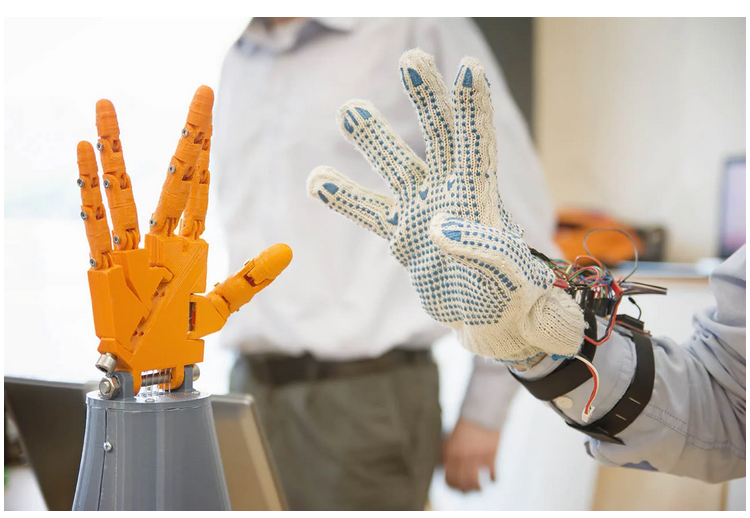 Every educator needs to incorporate 3D printing to provide the opportunity to learn more about the technology that’s shaping the world. To speak to the Formlabs Education team and learn more about 3D printers in education, contact our team below.
Every educator needs to incorporate 3D printing to provide the opportunity to learn more about the technology that’s shaping the world. To speak to the Formlabs Education team and learn more about 3D printers in education, contact our team below.
5 Benefits of 3D Printing in Education
How 3D Printing Works3D printing works by starting with a digital model in a 3D CAD (Computer Aided Design) file and then creating a physical three-dimensional object. An object is scanned - or an existing scan of an object is used, which is processed by a piece of software known as a “slicer.” The slicer converts the model into a series of thin, 2-dimensional layers and produces a file with instructions (G-code) tailored to the specific type of 3D printer.
The type of 3D printer most often found in classrooms is called an FDM (Fused Deposition Modeling) machine, such as the MakerBot Replicator +.
The 3D printer applies the required combination of raw material (plastic, metal, rubber, and the like) and then builds the object by adding one layer at a time, 2D layer by 2D layer, until it is completely designed and finished according to the design criteria from the original CAD file.
For 3D printing’s use in education, it’s a matter of bringing objects out of the computer screen and into the real, physical world - and the into the hands of students for inspection, analysis, and other processes that benefit from physical manipulation.
Here are just a few examples of how schools and students can use a 3D printer in the classroom:
- - History students can print out historical artifacts to examine
- - Graphic Design students can print out 3D versions of their artwork
- - Geography students can print out topography, demographic, or population maps
- - Chemistry students can print out 3D models of molecules
- - Biology students can print out cells, viruses, organs, and other biological artifacts
- - Math students can print out 3D models of problems to solve
These are some of the ways 3D printing technology is bridging the gap between the physical and the digital worlds - find what you need on the screen, then print it into existence.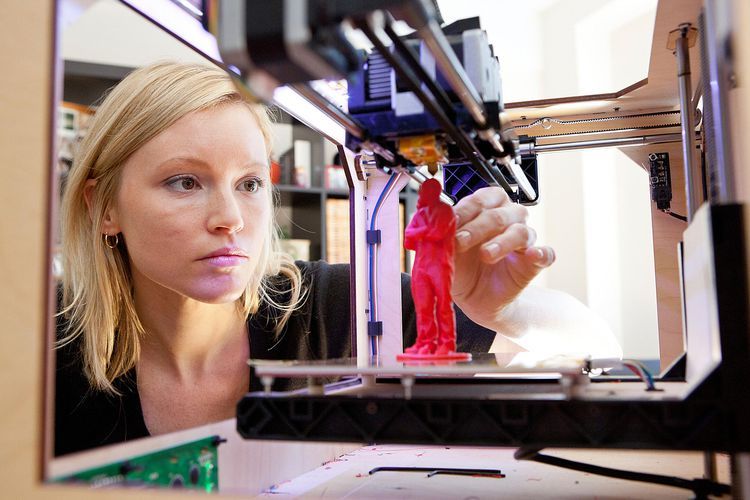
KInd of mind-boggling, isn’t it?
With the cost of 3D printers becoming more and more affordable, they are no longer just another technological gadget for students to play with but are now an important and useful educational tool. They make both teaching and learning better.
3D printing is one tool that helps students conceptualize and visualize their designs as they develop their work from the development stages of a sketch to the final product.
The 5 Major Benefits of 3D Printing in EducationFrom the perspective of growth and development, future designers, engineers, and artists all will have been students who have been impacted by 3D printing.
Consider these 5 major benefits of 3D printing’s impact on education...
- Creates Excitement – 3D printing offers students the ability to experience their projects from the model stage to actual creation of the model. This creates both excitement and a better understanding of the design process as they gain hands-on experience it from conception to creation.
 The individual features are seen more clearly as the student builds the project layer by layer. Excitement also stems from the ability to explore details in reality, not just on a screen or in a textbook. 3D printing also brings the world of theory to the physical world where students can see and touch, opening up new possibilities for learning and activities.
The individual features are seen more clearly as the student builds the project layer by layer. Excitement also stems from the ability to explore details in reality, not just on a screen or in a textbook. 3D printing also brings the world of theory to the physical world where students can see and touch, opening up new possibilities for learning and activities.
- Complements the Curriculum – No matter what curriculum is being used, 3D printing can help students and teachers work better. 3D printing elevates students from being passive consumers of information on a screen with no thought given to productivity. Unlike conventional classrooms where students are easily bored, they become active and engaged participants through the conception, design, and execution of their projects and interacting with the 3D printer and the teacher.
- Gives Access to Knowledge Previously Unavailable – Because most 3D printers are pre-assembled and plug and play, it is a fun cutting-edge technology for students to learn.
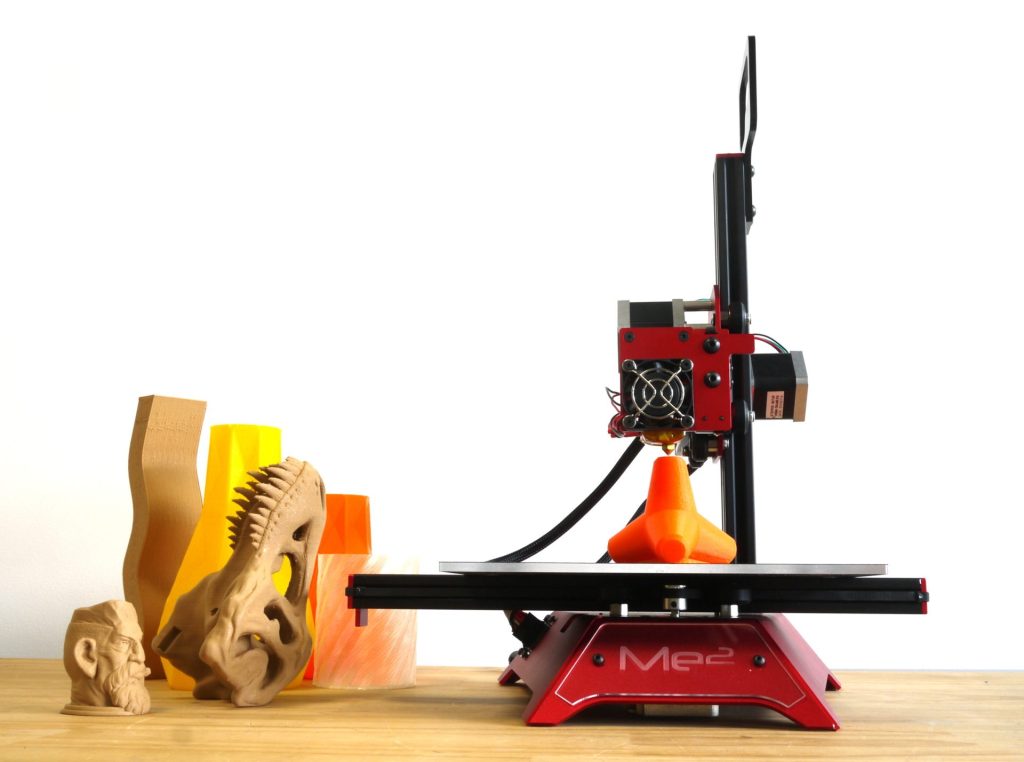 Students learn that it is perfectly acceptable to fail on the first try and then try again in order to improve. As students begin to understand that failure is part of the process, they become less afraid to attempt and execute new and different ideas in life. This builds students’ confidence and teachers enjoy the results of having self-motivated, self-confident students.
Students learn that it is perfectly acceptable to fail on the first try and then try again in order to improve. As students begin to understand that failure is part of the process, they become less afraid to attempt and execute new and different ideas in life. This builds students’ confidence and teachers enjoy the results of having self-motivated, self-confident students.
- Opens New Possibilities for Learning – An affordable 3D printer opens up unlimited learning opportunities for students. 3D printing provides students with opportunities to experiment with ideas, expanding and growing their creativity. It is not easy to have young students figure things out without the benefit of visualization. A visual learning environment improves their understanding of the world, being able to touch and see their projects. 3D printers open up new opportunities for presenting information to young students in an economical and efficient manner.
- Promotes problem-solving skills – The 3D printer provides a variety of learning experiences for students.
 They need to learn how different 3D printers work and how to operate them, and how to troubleshoot and solve problems. This is an art in which many students do not get to engage during the course of their normal studies. By learning how to troubleshoot and solve 3D printer problems, students learn to practice persistence and endurance in overcoming difficulties. This can translate to helping students solve their own problems in life as well.
They need to learn how different 3D printers work and how to operate them, and how to troubleshoot and solve problems. This is an art in which many students do not get to engage during the course of their normal studies. By learning how to troubleshoot and solve 3D printer problems, students learn to practice persistence and endurance in overcoming difficulties. This can translate to helping students solve their own problems in life as well.
Feeding students’ creativity skills can help develop a passion for original thinking and creativity that can later be applied in business. 3D printing promotes students achievements and also prepares them for a college education. They develop the confidence that allows them to pursue challenging courses such as those in STEAM fields. As students explore and grow their imaginations, it cultivates innovation where the student creates their own unique 3D projects that can help train others as well as solve problems.
… As you can see, 3D printing makes it possible for every student to dream bigger and better.
3D printers in education
3D printing is one of the main educational trends of recent years. Schools and universities in Russia and around the world clearly understand that without the use of 3D printers today it is impossible to provide students with a truly comprehensive training.
- How 3D printers can help you learn
- For techies and creators
- Use cases
- Choosing a 3D printer
- How 3D printers can help you learn
- For techies and creators
- Use cases
- Choosing a 3D printer
Just a few years ago, 3D equipment was not well represented in domestic colleges and universities due to its high cost. But now the situation has changed. First, high-quality 3D printers at an affordable price began to appear on the market. In addition, the state actively supports innovative programs in educational institutions by allocating funds for the purchase of 3D printers and 3D scanners.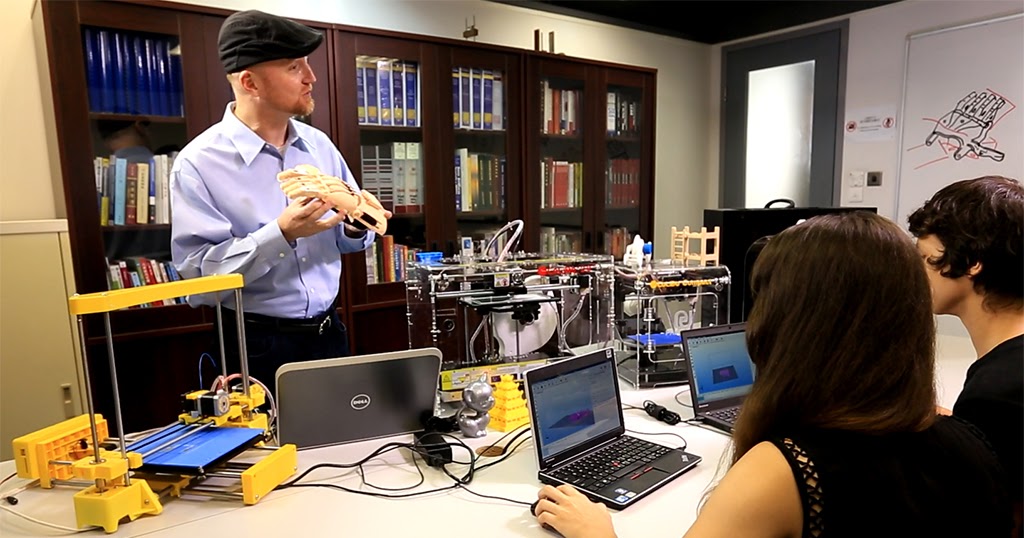
A few years ago, 3D equipment was not well represented in domestic colleges and universities due to its high cost. But now the situation has changed. First, high-quality 3D printers at an affordable price began to appear on the market. In addition, the state actively supports innovative programs in educational institutions by allocating funds for the purchase of 3D printers and 3D scanners.
How 3D Printers Help Education
Educational institutions around the world are using 3D printing. 3D printers improve the learning process, develop imaginative thinking among students, accustom future specialists to automated programming and design. 3D printing greatly increases the interest in the learning process, as it allows students to feel like a real innovator.
Having created a model on a computer, a student will be able to hold it in his hands in a few hours - this is a great motivation to create something new.
Students who use a 3D printer for educational purposes have the opportunity to learn from their own mistakes.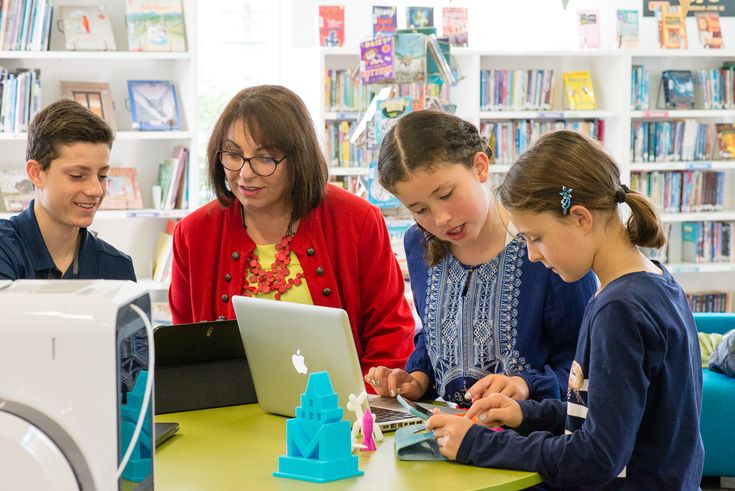 On paper or a computer, it is difficult to notice the flaws of the model, and when creating a mock-up or test part, the student, having modeled it on a computer in a 3D program, holds it in his hands after a short period of time. If something does not work, then this is not a problem, you can try again.
On paper or a computer, it is difficult to notice the flaws of the model, and when creating a mock-up or test part, the student, having modeled it on a computer in a 3D program, holds it in his hands after a short period of time. If something does not work, then this is not a problem, you can try again.
For the educational institutions themselves, the installation of a 3D printer will not only raise the general prestige, but also train real specialists capable of performing real design tasks. At the same time, impressive costs for the purchase of the equipment itself and for its further use will not be required.
3D printers are great for all ages. 3D modeling devices will be of interest to younger students for general development, acquaintance with technology, for use in the game mode. High school students and students will appreciate the benefits of 3D printers from a practical point of view. With their help, it will be possible to implement author's projects, print practical tasks, develop creative abilities and skills.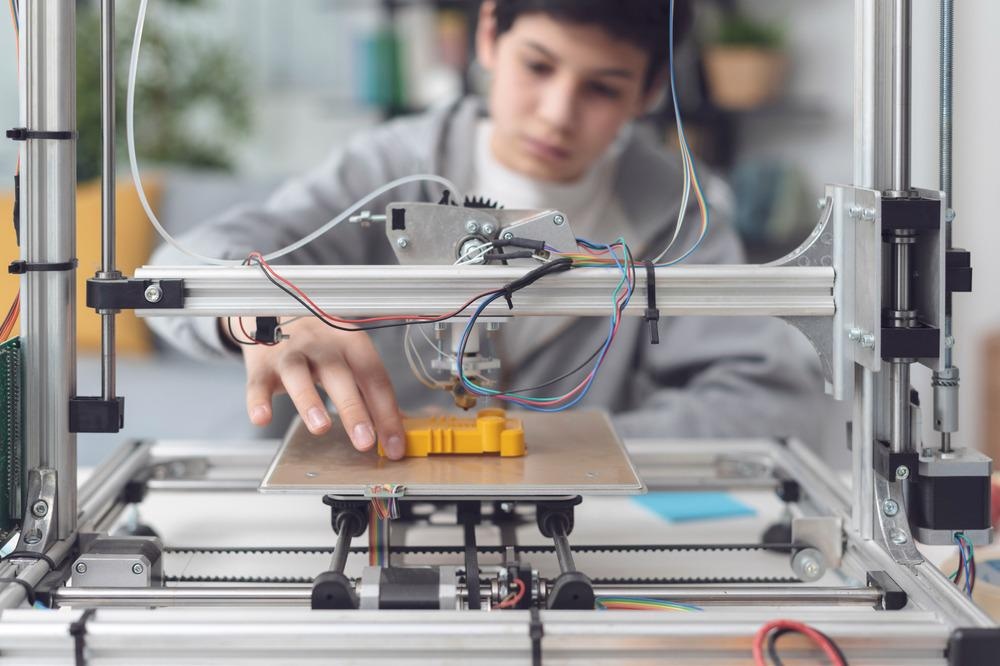
How 3D printers help in education
3D printing is used by educational institutions around the world. 3D printers improve the learning process, develop imaginative thinking among students, accustom future specialists to automated programming and design. 3D printing greatly increases the interest in the learning process, as it allows students to feel like a real innovator.
Having created a model on a computer, a student will be able to hold it in his hands in a few hours - this is a great motivation to create something new.
Students who use a 3D printer for educational purposes have the opportunity to learn from their own mistakes. On paper or a computer, it is difficult to notice the flaws of the model, and when creating a mock-up or test part, the student, having modeled it on a computer in a 3D program, holds it in his hands after a short period of time. If something does not work, then this is not a problem, you can try again.
For the educational institutions themselves, the installation of a 3D printer will not only raise the general prestige, but also train real specialists capable of performing real design tasks. At the same time, impressive costs for the purchase of the equipment itself and for its further use will not be required.
3D printers are great for all ages. 3D modeling devices will be of interest to younger students for general development, acquaintance with technology, for use in the game mode. High school students and students will appreciate the benefits of 3D printers from a practical point of view. With their help, it will be possible to implement author's projects, print practical tasks, develop creative abilities and skills.
Technical and creative 3D printers
In technical universities 3D technologies are the most popular. Students can design objects, parts and layouts right in the classroom, make prototypes using a 3D printer, evaluate and test them.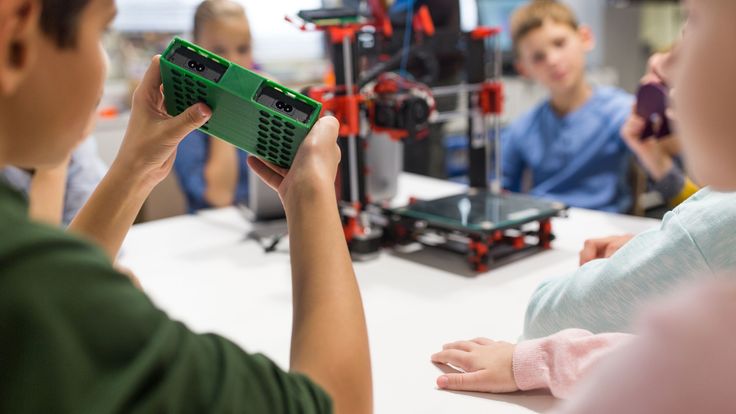 3D printing, already included in the curriculum of many universities, enables students to bring their design ideas and ideas to life, thereby increasing their relevance in a high-tech manufacturing environment.
3D printing, already included in the curriculum of many universities, enables students to bring their design ideas and ideas to life, thereby increasing their relevance in a high-tech manufacturing environment.
3D printers that print plastic products are commonly used to teach engineering students. Such equipment allows to obtain durable prototypes and mechanisms that can withstand physical stress and be tested.
3D printers for technical and creative professions
In technical universities 3D technologies are the most popular. Students can design objects, parts and layouts right in the classroom, make prototypes using a 3D printer, evaluate and test them. 3D printing, already included in the curriculum of many universities, enables students to bring their design ideas and ideas to life, thereby increasing their relevance in a high-tech manufacturing environment.
3D printers that print plastic products are commonly used to teach engineering students. Such equipment allows to obtain durable prototypes and mechanisms that can withstand physical stress and be tested.
Such equipment allows to obtain durable prototypes and mechanisms that can withstand physical stress and be tested.
Robotic Prosthetic Hand Design
Parts of a Miniature Aircraft Engine
Housing for a Test Model Aircraft
Robotic Prosthetic Hand Design
Parts of a Miniature Aircraft Engine
Aircraft test case
Creative specialties is another area where 3D printing is being used. Future architects and designers with the help of 3D printers can implement the most daring projects, experiment with materials and shapes. The ability to quickly visualize and physically implement their own projects allows students to master many aspects of their future profession much faster.
Full color 3D printers are the best choice for architecture and design students. Such equipment will allow your students to quickly get bright and visual visualizations of their projects.
Creative specialties is another area where 3D printing is actively used. Future architects and designers with the help of 3D printers can implement the most daring projects, experiment with materials and shapes. The ability to quickly visualize and physically implement their own projects allows students to master many aspects of their future profession much faster.
Future architects and designers with the help of 3D printers can implement the most daring projects, experiment with materials and shapes. The ability to quickly visualize and physically implement their own projects allows students to master many aspects of their future profession much faster.
Full color 3D printers are the best choice for architecture and design students. Such equipment will allow your students to quickly get bright and visual visualizations of their projects.
Student architectural layout
Design Chair
Design Development of shoes
Student architectural layout
Design Chair
Design development of shoes
Examples of use of 3D printers in education
9000 3D printers today are actively used in schools and schools and schools and universities throughout Russia. Their prototyping centers are open at Moscow State University, Moscow State Technical University. Bauman, MEPhI, Volga University and other universities. Here are some examples of the use of 3D printing by Western educational institutions:
Here are some examples of the use of 3D printing by Western educational institutions: SISSA International School for Special Studies significantly improves its development rates >>
University students create drones using 3D printers >>
Examples of the use of 3D printers in education
3D printers are now actively used in schools and universities in throughout Russia. Their prototyping centers are open at Moscow State University, Moscow State Technical University. Bauman, MEPhI, Volga University and other universities. Here are some examples of the use of 3D printing by Western educational institutions:
An International School for Special Sissa Research significantly improves their developments >>
University students create drones using 3D printer >>
3D printers for the formation of
Stratasys F120
3DLAM 9000 9000 9000 9000 9000 9000 9000 9000 9000 9000 9000 9000 9000 9000 9000 9000 9000 Total-Z AnyForm 450 PRO
3D Systems ProJet CJP 660 Pro
Stratasys F120
3DLAM Mini
TOTAL-Z ANYFORM 450 Pro
3D Systems Projet CJP 660 PRO
3D 3D in education-in which lessons 3D printer
This review article will focus on the use of 3D printing in education, in particular in school education.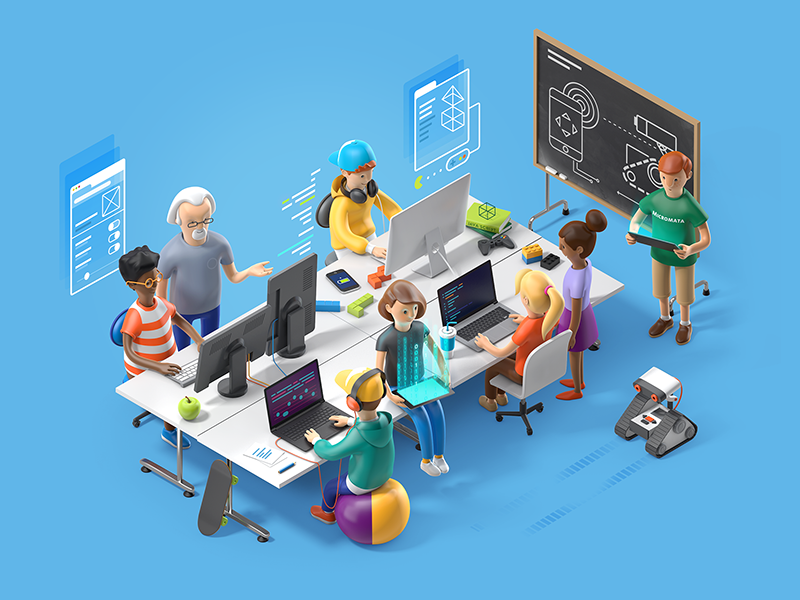 When starting to talk about 3D printing in schools, it is important to understand that 3D printing cannot be a separate discipline, teaching 3D printing as such cannot replace any existing school subjects, such as computer science, drafting or geometry.
When starting to talk about 3D printing in schools, it is important to understand that 3D printing cannot be a separate discipline, teaching 3D printing as such cannot replace any existing school subjects, such as computer science, drafting or geometry.
First of all, I would divide the teaching of 3D printing in schools into two large components, which, in principle, can exist one without the other.
The first is learning 3D modeling , because in order to print any product, you must have an object for printing. In the case of conventional printing, this any document, table, picture, photograph, presentation, etc. In the case of 3D printing, this is a 3D model that needs to be created in one of the many editors, such as a simple editor like Autodesk Tinkercad.
Learning the process of creating 3D models can be compared to a more advanced computer science lesson. Learning takes place in stages from simple to complex, you can start by creating a model like a cube, then draw a cone, a gear, a small vase, add an inscription on the cube, for example, your name or the name of the school.
Further, the lessons become more complicated, you can try to create a small car, a Lego man, etc. Depending on the direction of study - engineering, art or architecture, you can continue learning 3D modeling in programs such as 3D Studio Max, ZBrush, ArchiCAD and others. The whole process of learning 3D modeling as such is not related to 3D printing, only an insignificant part of all 3D models created today are subsequently printed. Of the models created, the vast majority exists in digital format, as does the vast majority of other digital information, such as documents and graphic content. Is teaching 3D modeling necessary in school education today, the answer is of course not. Does it help in the education of children? Of course, this makes it possible to better master the computer, as well as in the process of creating models to visualize the knowledge gained in the lessons of geometry, drawing and drawing.
So, we found out that 3D modeling is a separate discipline that can be taught in schools as an additional course or as part of computer science lessons, but it is indirectly related to 3D printing.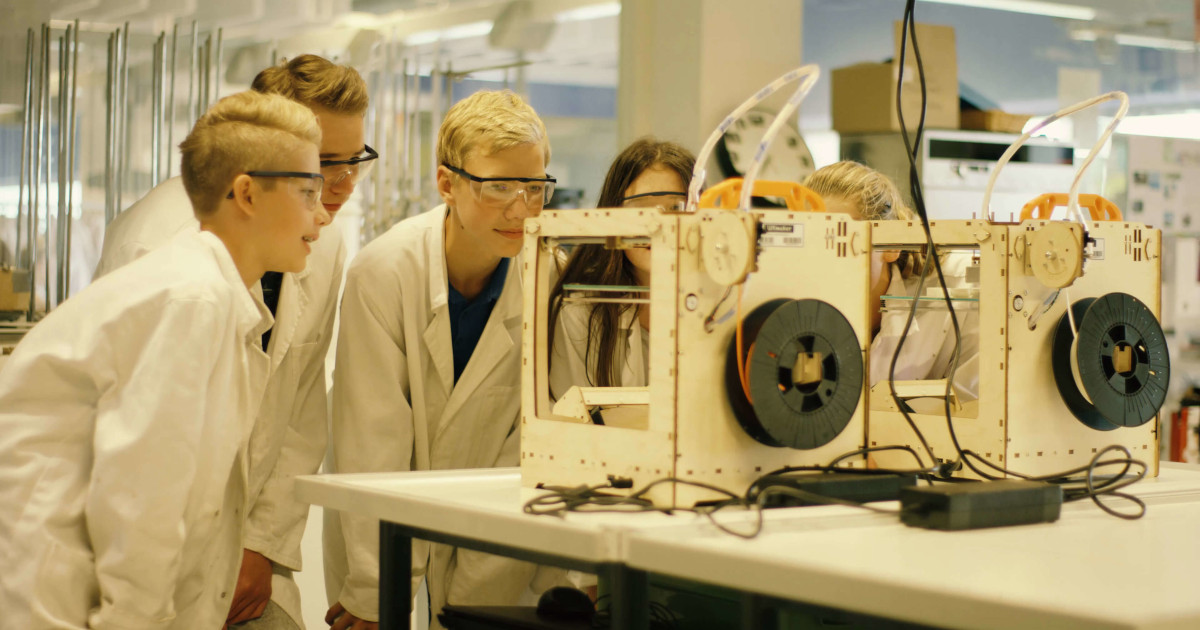 I would compare it with photography and newspaper publishing - all newspapers have photographs and it is difficult to imagine newspapers without photographs, but at the same time a huge number of photographs do not end up in newspapers, but are used for other purposes.
I would compare it with photography and newspaper publishing - all newspapers have photographs and it is difficult to imagine newspapers without photographs, but at the same time a huge number of photographs do not end up in newspapers, but are used for other purposes.
Moving directly to 3D printing, it is important to note that 3D printable models come from 3 sources:
- they can be simulated,
- find ready-made models on sites such as MyMiniFactory and many others
- obtained by 3D scanning.
The first step in getting started with typing is to get familiar with the slicing software. The slicer software is usually supplied with a 3D printer and is a “translator” from the language of the 3D model to the language of the printer. With the help of this program, the model is prepared for printing with the specified parameters.
The printer needs clear commands: what to do, how to move the carriage, how thick the layer will be printed, what material, at what temperature, how voids will be filled, and much more.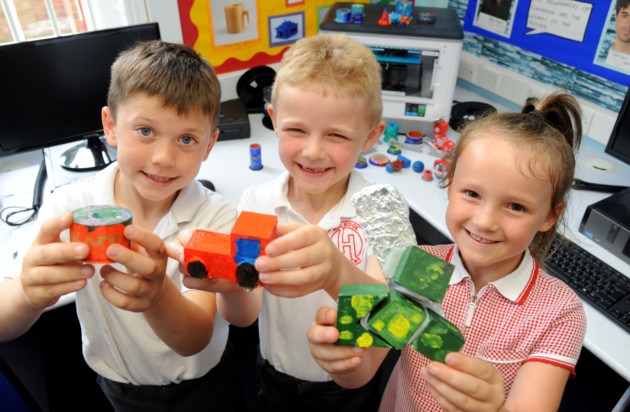 Thus, a novice 3D printer needs to learn how to use this software product before starting direct printing.
Thus, a novice 3D printer needs to learn how to use this software product before starting direct printing.
The second part of the 3D printing training will be learning how to interact with a 3D printer, the 3D printing process requires certain knowledge and experience, in particular about the properties of various types of plastic or resin, interlayer adhesion, plastic sintering, its supply, etc. With With an experienced mentor on the example of printing models of various shapes, with various settings, students can reach an initial level of knowledge of the printing process itself and improve them as they gain experience, taking into account the capabilities of the 3D printing equipment that they have at their disposal.
We understood how to get a 3D model, how to prepare it for printing and how to print it, but did not answer the main question, why then do we need 3D printing at school?
It is important to understand here that it is pointless to teach 3D printing at school as a subject, since this is a highly specialized discipline that a small percentage of students need to apply in future professional tasks. Such knowledge is usually obtained during the acquisition of secondary specialized or higher education. But what 3D printing is great for is embedding it into the learning process in other subjects. At first glance, a bold statement is quite easy to prove on a number of simple examples.
Such knowledge is usually obtained during the acquisition of secondary specialized or higher education. But what 3D printing is great for is embedding it into the learning process in other subjects. At first glance, a bold statement is quite easy to prove on a number of simple examples.
Mathematics
A 3D printer will help you learn the multiplication table quickly and with pleasure.
Biology
It is not necessary to dissect a live frog, you can make a 3D printed model and carry out this procedure in a humane way.
Anatomy
You can print the skull or other organs and visually study its structure.
Geography
Each student can print a square and assemble the landscape of the earth's surface together.
A separate educational area where 3D printers are indispensable tools is the area of additional education, namely the numerous and very popular today circles of robotics, modeling, prototyping and others.
3D printing is in great demand in such educational institutions as children's technoparks Quantoriums and TsMITs, which are analogous to the circles of young technicians from our childhood. These centers are equipped with everything you need, including 3D printers, 3D scanners, milling machines, mini CNC machines, and more.
This set of equipment allows not only and not so much to learn the skills of 3D printing, scanning, modeling, and so on, but also to create real design works that can be presented at olympiads, exhibitions, or even subsequently turned into technology startups. At the end of each module, a final lesson is provided, during which the team defense of scientific and technical projects, students and natural science research works takes place.
At the end of this short article, I'd like to give you some tips on choosing the best equipment for schools and further education institutions.
If your school has 3D modeling in its computer science course or as a separate additional course and the task is to print simple models of an initial or intermediate level of complexity, then I would recommend paying attention to budget models of 3D printers created specifically for this purpose.
For example, the FlashForge Adventurer 3 3D printer model has a closed housing, a safe, easily removable nozzle, a webcam for remote monitoring of printing from an application, a color touch-screen display familiar to children from smartphones and tablets.
For a more advanced level of learning, a model like FlashForge Inventor is perfect, which allows you to create more complex semi-professional models.
If the task is to provide Quantorium or TsMIT with 3D printers, then you need to choose the most versatile models that can print a wide range of different materials, preferably with an enlarged camera for large projects. Such printers are able to cope with various, sometimes very complex and, most importantly, diverse tasks. These models certainly include the Raise3D Pro2 printer, which, due to its versatility, the presence of a fully functional slicer, cloud service and a host of additional functions, is rightfully considered a leader in its segment.
Such printers are able to cope with various, sometimes very complex and, most importantly, diverse tasks. These models certainly include the Raise3D Pro2 printer, which, due to its versatility, the presence of a fully functional slicer, cloud service and a host of additional functions, is rightfully considered a leader in its segment.
If some specific areas of printer use are known in advance, then you can choose a model for these specific tasks, for example, to create detailed miniatures, printers using photopolymer printing technology are suitable, for example, the Phrozen Shuffle 4K model, which is capable of creating models of jewelry accuracy and detail.
We hope this article was useful for you, and you got a rough idea about 3D printing in education, our company's specialists will always be happy to help you with the choice of the necessary equipment.


